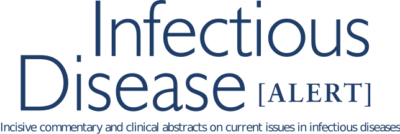
Infectious Disease Alert – April 1, 2006
April 1, 2006
View Issues
-
Treating Invasive Candidiasis: Sooner (Much Sooner) is Better
Shan and colleagues examined outcomes of 18 gastrointestinal surgery patients with invasive candidiasis who were treated preemptively based on clinical criteria from 1999 through 2002, and compared them to outcomes of 18 patients treated only on the basis of positive blood cultures or other unequivocal evidence of deep infection from 1995 through 1998. -
Expanding the Echinocandin Class: Eraxis® (Anidulafungin)
Fungal infections are becoming more prevalent, as Candida spp. represent the fourth most common organism recovered from blood of hospitalized patients in the United States. -
Host Genetics, Coreceptor Function, Host Susceptibility to HIV Infection, and Disease Progression
The laboratory group from the Pasteur Institute and inserm screened for CCR5 coding region polymorphisms in 3 groups of Vietnamese subjects, including 47 HIV-1 infected intravenous drug users (IDUs), 50 highly HIV-1 exposed but seronegative IDUs, and 37 HIV-1 unexposed seronegative individuals. -
Updates by Carol A Kemper
Following the introduction of more highly active antiretroviral therapy in ~1995, epidemiologists observed a 50% decrease in rates of invasive pneumococcal disease in persons with HIV/AIDS. -
Pharmacology Watch: Can Calcium and Vitamin D Prevent Hip Fractures?
Treatment of Benign Prostatic Hyperplasia; Treatment of Osteoarthritis of the Knee; Refractory Asthma and TNFConnection?; FDA Actions -
Clinical Briefs in Primary Care supplement
